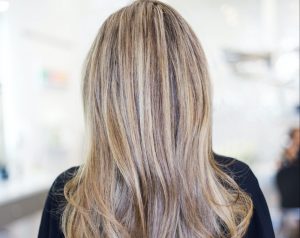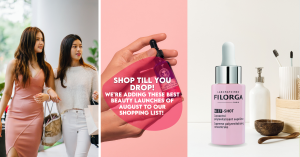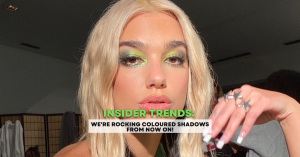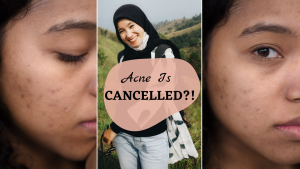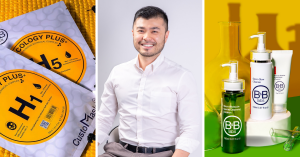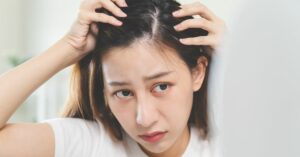Hair
Indian Hair Oiling Is What’s Missing From Your Hair Care Routine And Why We Need To Fix That ASAP!
Hair oil application is something passed down through generations in India. Indian women are known for their beautiful black, glossy,...
By: Beauty Insider Journalist / August 29, 2021

Hair oil application is something passed down through generations in India. Indian women are known for their beautiful black, glossy, thick and long hair. It is regarded as a woman’s crown jewel in India. However, we all want to know what their secret is and it’s simpler than you think- hair oiling!
Take one look at an Indian womens’ hair and you’ll understand that their hair game is no joke. They often believe that hair care is an extension to skincare- regarding it as an important part of self-care (as it should). Therefore, it’s no surprise that their method although lies in hair oiling but consistency is the secret.
For years, I have been going through hair thinning due to hair loss and it has become one of my biggest insecurities. I have gone through numerous treatments and products to reduce even a minuscule of my struggle. However, to no avail, my hair concerns persist.
With that, Beauty Insider is excited to tell you all about the wonderful technique and art of Indian hair oiling.
Contents
What Is Hair Oiling?

Pouring oil over hair and rubbing it into the scalp to improve moisture, lustre, and shine is known as hair oiling. Hair oiling can soften hair and replenish vitamins and minerals lost via regular washing. Moreover, Ayurvedic medicine recommends this technique, which has been used in India for millennia. Additionally, it may also be done in a variety of ways, with different oil kinds providing distinct advantages.
Types Of Oils You Can Use
Carrier Oils
Argan Oil
Because it is high in fatty acids, primarily oleic and linoleic acid, argan oil is commonly used as a moisturiser for skin and hair. These oils have been demonstrated to lubricate the hair shaft and aid in the moisture retention of your hair. Additionally, argan oil is also high in vitamin E, which forms a fatty layer on your hair and scalp, which can help prevent dryness, decrease frizz, and increase shine.
Castor Oil
Castor oil is a popular hair growth therapy because of its inherent antiviral and antibacterial qualities. Many people use castor oil to grow longer hair or to cure alopecia aka hair loss. It’s promoted as a therapy for dry scalp as well as other scalp issues. Furthermore, anecdotal evidence suggests that taking castor oil once a month can boost growth by three to five times the typical rate.
Jojoba Oil
Because of its oily nature, jojoba oil may be used as a moisturiser. It may also be used in hair conditioners to help protect your hair from dryness, breakage, and split ends. The oil may also be used to hydrate the scalp and may be used to treat dandruff. Moreover, vitamin C, B and E, copper and zinc are just a few of the vitamins and minerals found in jojoba that help to nourish hair.
Essential Oils
Rosemary Essential Oil
The fact that rosemary oil promotes hair growth might be due to the herb’s fundamental health advantages such as improving circulation. As a result, it may protect hair follicles from becoming blood-starved, dying and losing their velocity. Additionally, rosemary essential oil is used to prevent premature greying and dandruff in addition to promoting hair growth. It may also assist if your scalp is dry or itching.
Black Cumin Seed Oil
Antibacterial and antimicrobial effects are well-known properties for black seed oil. It can help keep the scalp healthy by treating problems like dandruff and keeping it hydrated. Thus, its high content of fatty amino acids may also assist to lock in moisture in individual hair shafts.
Neem Oil
The active component in neem oil is Nimbin. Nimbin has anti-inflammatory properties, making it potentially beneficial in the treatment of dermatitis, psoriasis, and other scalp irritations. Neem is also an antifungal herb; dandruff and discomfort can be caused by yeast accumulation on the scalp in rare circumstances. Topical neem treatment may help relieve these symptoms, according to some evidence.
Peppermint Oil
Many people use peppermint oil in their cosmetics and hair care routines. It may aid in the treatment of dryness, irritation, and other scalp issues. Because menthol is a vasodilator that aids blood flow, some people have used the oil to treat hair loss. Increased circulation may help to promote hair development and prevent hair loss.
How I Got Into Hair Oiling

I have always been interested in the method of hair oiling for years but was unsure if I could properly commit and be strict with it. However, now, I have been doing it since the start of the year and I haven’t looked back. What used to be thinning spots have now populated to growing healthy hair once more. This method has truly been a life-changer!
What it did to my hair
My hair now has only become thicker with new hair but the lustrous shine is impeccable. Due to the natural waviness of my hair, it tends to frizz up. However, due to the newfound consistent moisture and hydration the oils provide, my mane is tame and shiny.
To add, my hair loss has reduced significantly. Although the results aren’t instant and indeed may take months to show off, as long as you continue to practice, it will make everything worth it in the end!
What mixture of oils do I use?
Inside a bottle that comes with a pump (my old hair oil container) I add:
- Castor oil: 30ml
- Jojoba oil: 30ml
- Rosemary essential oil: 20ml
- Black cumin seed oil: 20ml
- Neem oil: 20ml
How to apply
- In a separate small bowl, I use 10 pumps of oil and heat it in the microwave until it warms up
- Starting with my roots and massage the oil into my scalp before moving down through the lengths of my hair
- I leave it in my hair for 30 minutes to overnight
- Double shampooing my hair to ensure I don’t have any oils trapped that could lead to build-up


